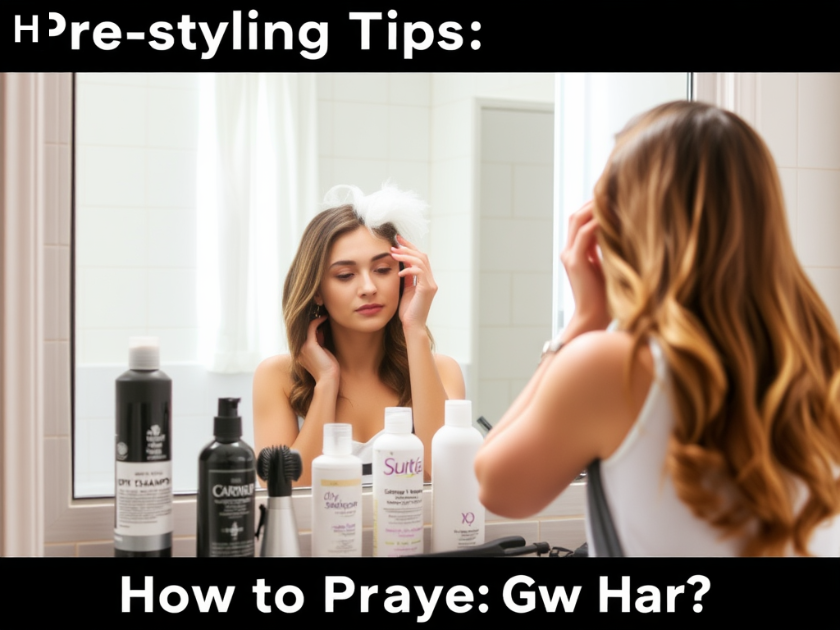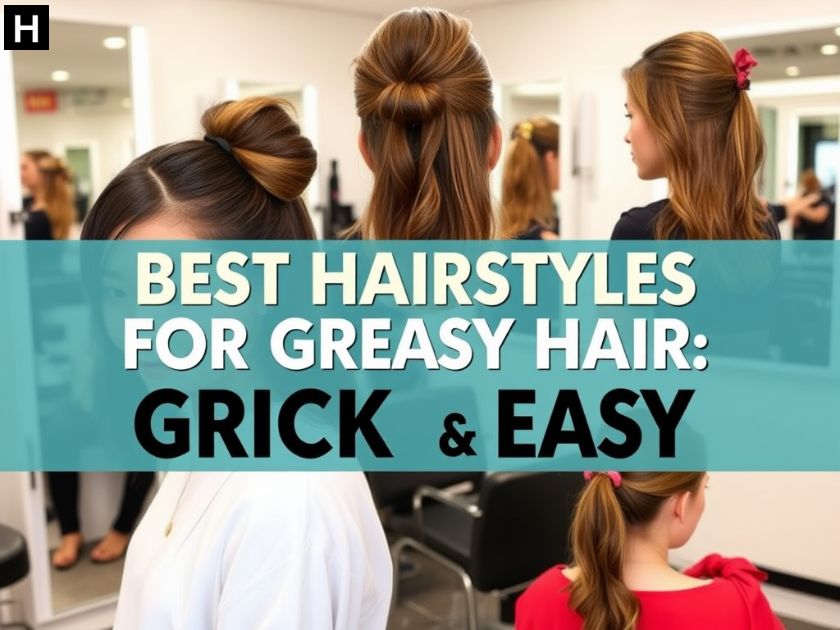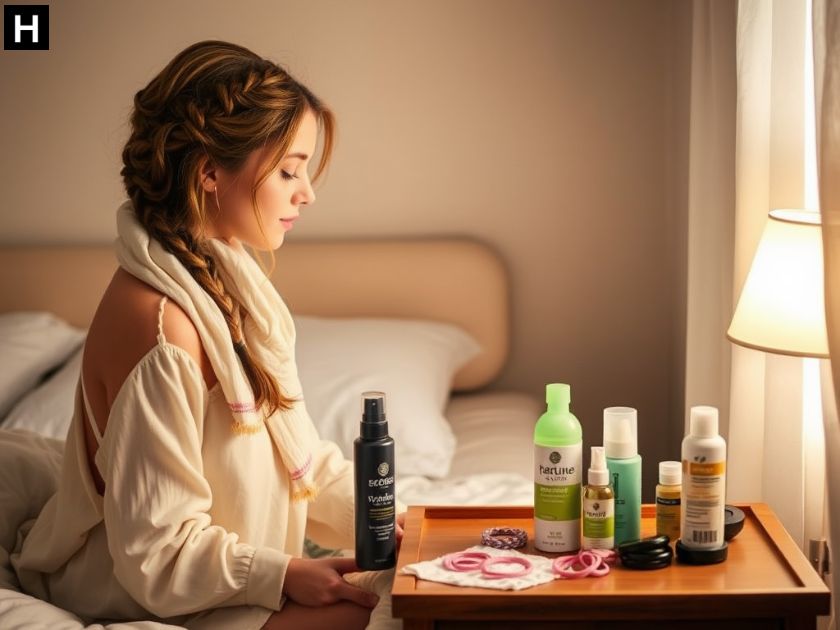Greasy hair can be frustrating, making your locks look flat, dull, and unwashed. Excess oil buildup weighs hair down, making styling a challenge. But with the right techniques, you can transform oily hair into stylish, fresh-looking locks. Knowing how to manage and style greasy hair is the key to maintaining a clean and voluminous appearance.
The right hairstyles, products, and tricks can help disguise oil and add texture. From quick styling hacks to the best accessories, there are plenty of ways to keep greasy hair looking flawless. This guide will show you expert-approved methods to style oily hair effortlessly. Say goodbye to limp, lifeless strands and hello to chic, well-managed hair!
Understanding Greasy Hair: Causes & Solutions
Greasy hair happens when the scalp produces too much sebum. This oil is natural and protects hair, but excess can make it look limp and dirty. Factors like genetics, hormones, and even diet can increase oil production. Using the wrong hair products can also trigger more grease. Understanding the root cause helps in managing it effectively.
To control oil, choose a mild, sulfate-free shampoo. Overwashing can strip natural oils, causing the scalp to produce even more sebum. A balanced hair-washing schedule is key to keeping grease levels normal. A healthy diet with less processed food can also reduce oil buildup. Managing stress can help, as anxiety increases oil production.
Pre-Styling Tips: How to Prepare Greasy Hair?

Before styling, remove excess oil without overwashing. Rinse your hair with cool water to refresh the scalp and reduce oiliness. Applying a lightweight, oil-free conditioner only to the ends prevents buildup. Avoid touching your hair frequently, as hands transfer more oil. Keeping your scalp clean but not stripped is essential for long-lasting styles.
Use a dry shampoo or volumizing spray before styling. These products absorb oil and add texture, making hair easier to manage. Brushing hair gently with a boar bristle brush can distribute oil evenly. Avoid heavy creams or serums that can weigh hair down. A well-prepped base ensures your style lasts longer.
Dry Shampoo: A Lifesaver for Oily Hair
Dry shampoo soaks up excess grease and adds instant freshness. It works by absorbing sebum at the roots, giving hair a cleaner look. Choose a lightweight formula that won’t leave a white residue. Apply it by sectioning hair and spraying from a distance, then massage it in. Brushing through helps distribute the product evenly.
For best results, use dry shampoo before hair gets too oily. Overnight application can prevent excessive greasiness by morning. Avoid using it too often, as buildup can clog hair follicles. If needed, refresh with a small amount rather than overloading hair. Dry shampoo is a quick fix but not a replacement for washing.
Heat Styling: Should You Use It on Greasy Hair?
Heat styling can be tricky with greasy hair. High heat can activate oil glands, making hair look oilier. However, using heat properly can add volume and reduce the appearance of grease. A blow-dryer on a cool setting can lift roots and prevent flatness. Curling or waving hair adds body, making oil less noticeable.
Always use a heat protectant before styling. Lightweight formulas prevent hair from looking weighed down. Avoid straighteners, as sleek styles can make oil more visible. Instead, opt for textured waves or a tousled look. Heat should be used sparingly to maintain scalp balance.
Best Hairstyles for Greasy Hair (Quick & Easy)

Some styles work better for oily hair than others. A sleek ponytail hides greasy roots while looking polished. Messy buns are perfect for disguising oil and require minimal effort. Braided hairstyles help blend oily strands while adding texture. A half-up, half-down style can keep the top portion neat while maintaining volume.
Avoid styles that require too much brushing. The more you touch your hair, the greasier it gets. Use light styling products to keep the look fresh. Loose, effortless styles are ideal for oily hair days. The right hairstyle can make greasy hair look intentional and stylish.
Volumizing Tricks to Avoid Flat, Oily Hair
Flat hair makes grease more noticeable. Adding volume at the roots can prevent hair from looking weighed down. Use a texturizing spray to lift the roots without adding extra oil. Flipping hair upside down while blow-drying creates instant volume. A loose wave or soft curls can make hair appear fuller.
Avoid heavy conditioners that flatten hair further. Using a dry shampoo before styling can provide more grip and body. Teasing the roots slightly can help maintain lift throughout the day. Layered haircuts add movement, making oil less obvious. Small changes in styling can create a big difference in volume.
Hair Accessories That Can Hide Greasy Hair
Accessories can instantly refresh greasy hair. Headbands cover oily roots while adding a stylish touch. Scarves and bandanas create a trendy look while hiding flat or limp areas. Hair clips and barrettes can secure sections, preventing them from sticking to the scalp. Hats offer a quick and effortless solution for very oily days.
Choosing the right color and style enhances the overall look. Darker shades hide oil better than shiny or light-colored accessories. A textured scrunchie can lift a ponytail, making hair appear fuller. Experimenting with different accessories can turn an oily hair day into a fashion statement. A few simple additions can transform the way greasy hair looks.
Overnight Hairstyles to Manage Greasy Hair

Sleeping in a strategic hairstyle can reduce morning oiliness. Loose braids prevent hair from becoming too flat or clumped together. A high, loose bun can keep roots lifted, reducing grease buildup overnight. Wrapping hair in a silk scarf minimizes friction and oil spread. Using a silk pillowcase can also help control oil production.
Applying a small amount of dry shampoo before bed absorbs oil overnight. Keeping hair off the face prevents sebum from transferring. Avoid tight hairstyles, as they can cause excessive oil buildup. The right overnight routine can make morning styling easier. Waking up with manageable hair saves time and effort.
Natural Remedies to Reduce Greasiness
Homemade treatments can help control oil production. A rinse made from apple cider vinegar balances scalp pH and reduces excess oil. Aloe vera gel soothes the scalp while keeping hair fresh. Lemon juice, diluted with water, can naturally cleanse oily roots. Green tea rinses can also help regulate sebum levels.
Using natural ingredients prevents chemical buildup in hair. Clay masks absorb oil and detoxify the scalp. Avoid overuse, as too much cleansing can trigger more oil production. A balanced approach with gentle, natural treatments works best. Simple home remedies can provide long-term benefits for greasy hair.
Mistakes to Avoid When Styling Greasy Hair
Some habits make greasy hair worse. Overwashing strips the scalp, causing it to produce more oil. Using too many styling products can weigh hair down and attract dirt. Avoid touching hair too often, as hands transfer oils. Choosing the wrong brushes can spread grease instead of reducing it.
Tight hairstyles can trap oil, making hair look dirtier. Using hot water while washing can stimulate sebum production. Applying conditioner to the scalp adds unnecessary oil. Learning what to avoid can keep hair looking fresher for longer. Small changes in routine make a big difference.
See More: How Do You Style Short Layered Hair for Every Occasion?
Conclusion
Managing greasy hair is about balance. The right products, hairstyles, and techniques can make oil less noticeable. Small changes in routine can prevent excessive grease buildup.
Choosing the right styles and accessories can turn oily hair into a chic look. With the right approach, greasy hair can always look fresh and stylish.
FAQ’s
How Often Should I Wash Greasy Hair?
Washing too often can make the scalp produce more oil. Aim for every 2–3 days to maintain balance.
Can Diet Affect How Oily My Hair Gets?
Yes, foods high in sugar and unhealthy fats can increase oil production. A balanced diet with vitamins helps regulate it.
Does Brushing Hair Too Much Make It Greasier?
Yes, over-brushing spreads oil from the scalp to the strands. Use a boar bristle brush gently to avoid excess grease.
Is Conditioner Bad for Greasy Hair?
No, but avoid applying it to the roots. Focus on mid-lengths and ends to prevent excess oil buildup.
What Haircuts Work Best for Greasy Hair?
Layered cuts and textured styles add volume and reduce the appearance of grease. Avoid blunt cuts, which make oil more noticeable.